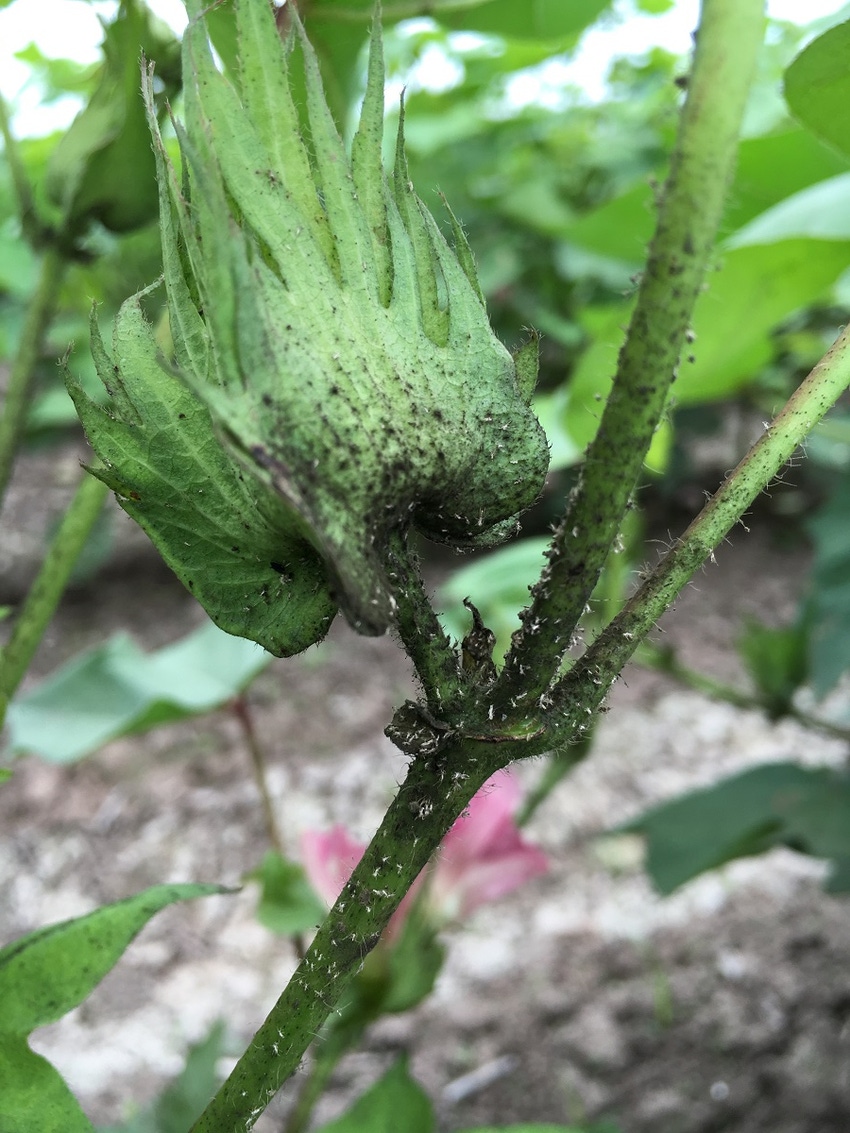
South Texas cotton producers from the Lower Rio Grande Valley north up the Texas coast and across the Coastal Bend are reporting early insect pressure in some fields.
Robert Bowling, Assistant Professor and AgriLife Extension entomology specialist in Corpus Christi, says thanks to cotton seed treatments that seem to be doing their job well in South Texas, the Coastal Bend and much of the Texas Winter Garden area has escaped serious problems from thrips this year.
For the latest on southwest agriculture, please check out Southwest Farm Press Daily and receive the latest news right to your inbox.
"[But] The cotton aphid is on the prowl. There are reports of cotton aphids building on cotton growing in the Valley. Late last week I found cotton aphids on cotton in several trials at the Texas A&M AgriLife Research and Extension Center at Corpus Christi," Bowling says in his latest early season pest/insecticide update.
He reports cotton aphid populations so far are light to moderate and seem slow to increase based upon the latest observations. Bowling says predators seem to be helping to keep the aphid in check.
IDENTIFICATION
"The aphid should not be confused with the sugarcane aphid. The cotton aphid nymph may vary in color from tan to green and are often marked by a dark head, thorax, and wing pads. The cornicles will be the same color as the body," he reports.
Growers should note wingless adult cotton aphids will vary in color from a light green mottled with dark green (most common) but may be whitish, yellow, pale green, and dark green. The legs are pale with the tips of the tibia and tarsi black (only the tarsi are black on the sugarcane aphid).
Danielle Ortiz, IPM Extension agent in the Lower Rio Grande Valley, notes cotton pest populations there have decreased this week after many producers were active in treating cotton last week.
"Sprayed fields showed they were responding well to their spray treatments. However, fields that were not treated for aphids were very much infested. We are noticing some fleahopper adults and a few nymphs in many fields, but nothing that warrants treatment. We are seeing spider mite numbers picking up in some fields but nothing too serious," she reports.
Ortiz says she is seeing a few whitefly adults in cotton, mainly along the Rio Grande, and says she expects populations to increase over the next two weeks. She also notes producers should remain alert to whiteflies as cotton is maturing quickly in the Valley now that hot weather has arrived. She says the good news is that she has observed an increase in many predators, including ladybugs, syrphids, and pirate bugs in cotton.
Bowling agrees that it is time for South Texas cotton producers to begin regular scouting for fleahoppers. His recommendation is to examine the main terminal buds of 25 randomly selected plants at each of four or more locations across the field.
During the first three weeks of squaring, 15 to 25 cotton fleahoppers per 100 terminals could begin to cause economic damage. As plants increase in size and fruit load, he says larger populations of fleahoppers may be tolerated without economic yield reduction.
He also warns that if fleahopper numbers warrant insecticide treatment, producers should consider other beneficial arthropods and pests, such as the cotton aphid, that are present prior to treatment. Selecting the proper treatment could help to control both pests and protect predators.
He warns that EPA has not approved the Section 3 request for Transform for use on cotton and other labeled crops. He says this means that Transform in 2016 cannot legally be applied to labeled crops, including cotton.
He says Dow AgroSciences is working with the EPA to reinstate the section 3 label, which may be coming soon.
About the Author(s)
You May Also Like




